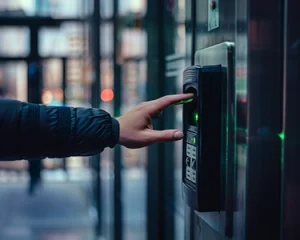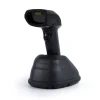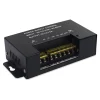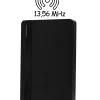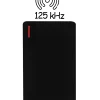The fiscal cash register is one of the most important devices at the point of sale. For many entrepreneurs, especially those engaged in trade or service activities, it is an indispensable tool for proper recording of sales and settlements with tax authorities. However, the cash register itself is only the beginning – there are many accessories that can make its operation more efficient and work with it easier. What are the most important of these? This you will learn from our article.
What is a fiscal cash register?
A fiscal cash register is an electronic device used to record and document the sale of goods or services. Its main purpose is to enable accurate recording of turnover and the amount of tax due, which indirectly affects the correct tax settlement of the entrepreneur.
Key features of cash registers
- Sales registration: The fiscal cash register records every sales transaction, so the entrepreneur can accurately track his revenue.
- Receipt printing: After each transaction, the cash register prints a receipt, which is a document confirming the sale and is the basis for any complaints or returns.
- Data security: The fiscal cash registers are protected from unauthorized access, ensuring the integrity and security of stored data.
- Regulatory compliance: The use of fiscal cash registers is regulated by law in many countries. In Poland, for example, there is an obligation to use cash registers in most types of business, especially if the entrepreneur’s turnover exceeds a certain threshold.
A fiscal cash register is not only a tool for keeping accurate records of sales, but also an important element in building trust among customers. It enables transparency and honesty of transactions, which translates into a positive image of the company in the eyes of the consumer.
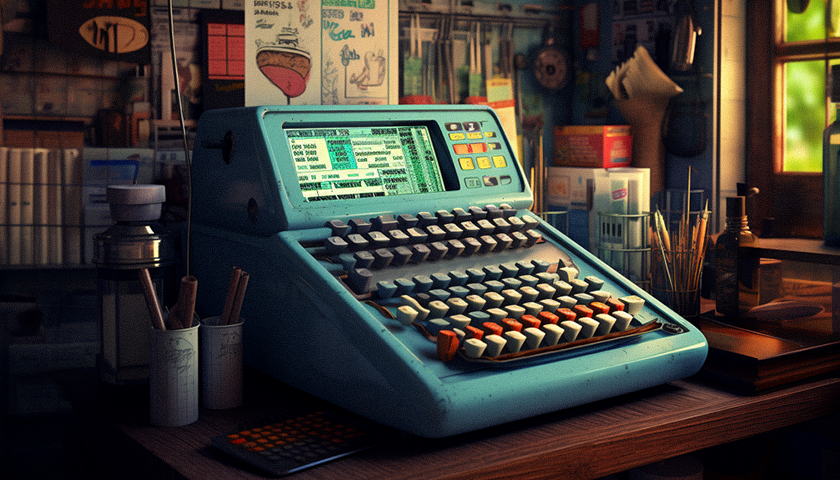
Where to start, that is, without what we will not start with the fiscal cash register
Wanting to start working with a fiscal cash register, we need to think about the most important accessory, without which our cash register cannot function. Since the main purpose of a fiscal cash register is to record sales, and consequently to print receipts, it is necessary to supply the device with consumables, such as thermal paper.
What is thermal paper
Thermal paper is a special type of paper that changes color when exposed to heat, rather than ink or ink. In a cash register, the print head generates heat where the letters or numbers are to appear, which causes the paper to change color and “print” the desired image or text. And it is on thermal paper that the proof of purchase, which is the receipt, is printed.
Why is the receipt so important?
Direct communication with the customer: The first and most important reason is that receipts are the main means of communication with the customer after a transaction. They confirm the purchase, the price, and contain other important information, such as the date of purchase and store details.
Basis for complaints: The receipt, printed on thermal paper, is the basis for any complaints or returns. Without it, the customer may have trouble proving the purchase.
Record of sales: For the entrepreneur, the receipt is not only a confirmation of the sale to the customer, but also a key document for recording sales.

Cash register accessories to support sales
A fiscal cash register is a mandatory tool for daily work in any place where products are sold or various services are offered. There are a number of useful accessories that support daily work with the fiscal device, making it easier and more comfortable.
Cash drawer
The cash drawer is one of the most important cash register accessories to facilitate sales.
The cashier drawer is designed for safe storage of cash. Inside it hides a practical money organizer, containing compartments for different denominations of coins and banknotes. The compartments for banknotes additionally have spring-loaded latches to secure paper cash. The money box in this form helps to keep things in order and save time, and also affects the convenience when taking money and giving change.
The money drawer can be opened in as many as three ways. With a dedicated key to the lock, which protects against unauthorized access, emergency with a lever usually located on the bottom of the device, and electronically. When the cash drawer is properly connected to the fiscal cash register via an RJ12 cable, the cash drawer can be opened from the fiscal device. After programming a specific key, just press it and our cash drawer will open itself. This solution affects the convenience and efficiency of work.
Made of strong steel, the cash drawers not only provide durability and resilience, but most importantly guarantee the safety of the cash stored inside. In addition, dedicated mounting brackets can be purchased for cash drawers, which offer easy installation of the device under the countertop. This affects space saving, aesthetics of the environment, as well as maximizing security, by hiding the cash drawer.
Some drawer models have a replaceable money tray, so that if the cash cartridge is damaged or worn out, the money organizer itself can be purchased, eliminating the need to purchase the entire drawer.
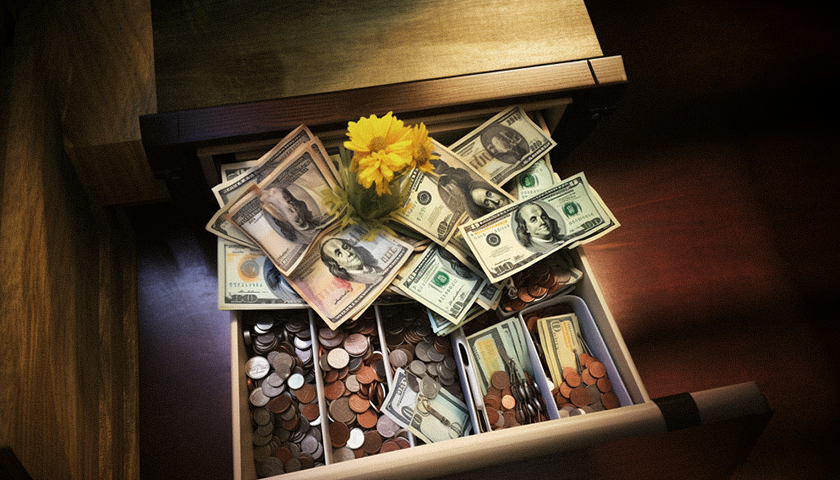
Payment terminal
A payment terminal is an electronic device used to process payment transactions using payment cards, contactless cards and, increasingly, mobile payments using smartphones. It acts as a point of interaction between the payment system and the customer’s bank account.
In the digital age, mobile transactions are becoming increasingly popular. More and more people, when going shopping, are abandoning cash payments and opting for the convenience of paying with a payment card. In order to enable customers to make mobile payments, every store or service provider needs to equip itself with a payment terminal.
So how does a payment terminal work? After a purchase is made, the cash register calculates the final amount to be paid. Then, using an integrated system or manually entering the amount, this sum is transferred to the payment terminal. The customer makes the payment by approaching or inserting the payment card into the terminal. The terminal reads the information from the magnetic stripe, the card’s chip or, in the case of contactless payments, from NFC (near field communication) technology. After this step, the device sends an authorization request to the customer’s bank via an Internet connection or phone line. This request contains information about the card number, expiration date, CVV code and the amount of the transaction. In the case of chip cards, the customer may be required to enter a PIN. As a result, the customer’s bank verifies the availability of funds in the account and any other security factors, such as spending limits. After verification, the bank decides whether to authorize the transaction. If the transaction is accepted, the terminal displays a message of successful authorization, and the amount is reserved in the customer’s account. If the transaction is rejected, the terminal informs the merchant and the customer. After the payment is successfully processed, the terminal prints a receipt confirming the transaction. This receipt is issued to the customer as proof of the payment made.

Barcode scanner
A barcode scanner is an electronic device used to read and interpret the information contained in barcodes. These codes are graphical representations of data usually about products, which are encoded in the form of vertical lines with different widths and distances between them.
The main purpose of a barcode scanner in the context of working with a cash register is to quickly and accurately identify a product. After scanning the barcode from a product, the cash register refers to its database to find the correct price, product name and other related information.
With a barcode scanner, the sales process becomes more automated. Instead of manually entering information about each product, the salesperson simply scans the code, and the cash register automatically adds the product to the receipt. Manual entry of product data can lead to mistakes, such as incorrect price or quantity. Barcode scanners minimize this risk by ensuring data accuracy and consistency.
A barcode scanner is an indispensable tool in modern points of sale. Working in conjunction with a cash register, it enables fast, efficient and accurate transaction processing, while improving the customer’s shopping experience and the store’s operational efficiency. It has already become a standard in many places, greatly speeding up and streamlining the work of salespeople and increasing customer satisfaction with their purchases.
Freestanding display for cash register
Standard cash registers are usually equipped with a small electronic display, showing only the price. Its small size can prove troublesome for customers who would like to see the prices of the products they buy, as well as the final price to be paid. On the small display of a fiscal device, customers often have trouble seeing the displayed value. In such cases, in order to increase the comfort and satisfaction of our customers, it is worth equipping your checkout stand with a free-standing display for the fiscal cash register.
Freestanding displays are shaped like a flag. The large, clear electronic screen is placed on a tall stand, located on a stable base. The display gives the customer a preview of the name and price of the product being purchased and provides good visibility. Acceosrium of this kind contributes to customer satisfaction and confidence.
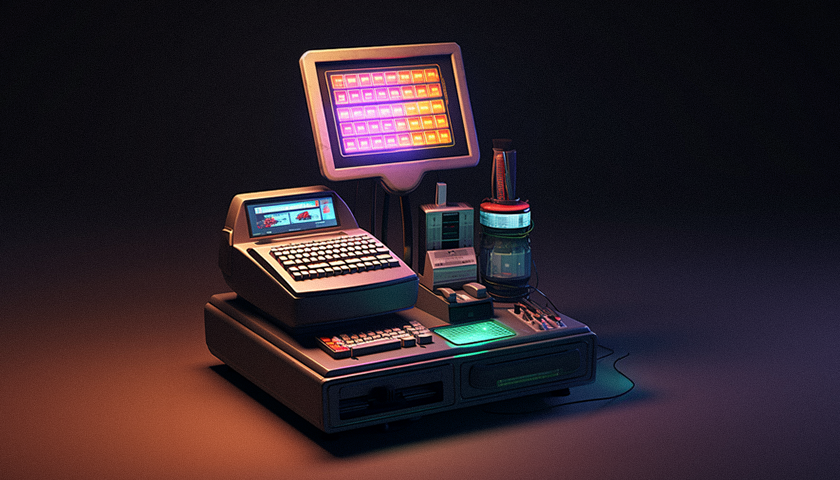
Label printers
For stores that offer goods that require labeling, such as food by weight, specialized label printers are an essential accessory. Self-adhesive label printers allow you to print a barcode and stick it on a product.
Security of the cash register
A fiscal cash register is often a considerable expense. Therefore, proper protection is a very important aspect. By taking care of our fiscal device we can extend its life, so that the equipment will serve us for as long as possible. For this purpose, certain accessories can help us.
Cash register cover
To ensure the safety of the cash register, we can purchase a special cover for storing the device. A cash register cover is a specially designed cover that is adapted to specific cash register models. Made of various materials, such as leather, fabric or plastic, covers are designed to provide additional protection for the cash register.
We can put such a cover on the cash register after finishing work, thanks to which the device will be protected against dust and dirt. A cash register case is a particularly useful accessory when you use the cash register for field work and often have to transport it. This will protect our fiscal device in the event of a fall and against shocks.
Cash register keyboard overlay
Cleaning the keys due to the gaps between them can be quite a problem. Various contaminants, such as dust or liquids, may get between the cash register buttons. Additionally, dirt and grease may accumulate on the surface of the keys. These environmental factors may affect the proper operation of the keyboard and, as a result, shorten its lifespan. A silicone cash register key cover can prevent these problems. It protects the keyboard of the fiscal device both against the buttons getting dirty and against the penetration of dust, air and liquid contaminants into the cash register. This accessory helps protect our equipment and can help extend the life of the cash register.
Did you know that...
- The first cash register was invented in 1879 by James Ritty. It was called the “Incorruptible Cashier” and was designed to prevent employee embezzlement in his saloon in Dayton, Ohio.
- Modern cash registers have little in common with the original models. Over the years, they have evolved from completely mechanical devices to advanced electronic systems that integrate with other business systems.
- The first electronic cash registers from the 1970s were among the first commercial applications of microprocessors, leading to an evolution in the computing field.
- The ringing sound we associate with opening an old cash register was intentionally added so that the store owner knew a sale had been made and the register was opened.
Additional accessories for the cash register
We have already learned about most of the cash register accessories, both those necessary and those useful that make work easier. At the end, it is worth mentioning additional accessories that are not necessary or necessary, but can be very helpful in certain situations.
SD memory card
When registering sales, the entrepreneur is obliged to print a double receipt for each transaction: one should be given to the customer as proof of purchase, and the other should be kept for proper settlement with tax institutions. As environmental awareness increases, more and more cash register models offer the option of saving copies of receipts in electronic form. Then the receipts that the entrepreneur is obliged to keep are not printed, which saves paper. Receipts in electronic form are most often stored in the device’s built-in memory. If our cash register does not have internal memory and we want to save copies of receipts in electronic form, it will be necessary to purchase an SD memory card supported by our device.
Car adapter
When your business activity requires you to work in the field, a car power supply may be a useful accessory. This type of cable is powered by the car’s cigarette lighter socket, so all you need to do is connect a cash register to it and you can provide services and print a customer’s receipt almost anywhere.
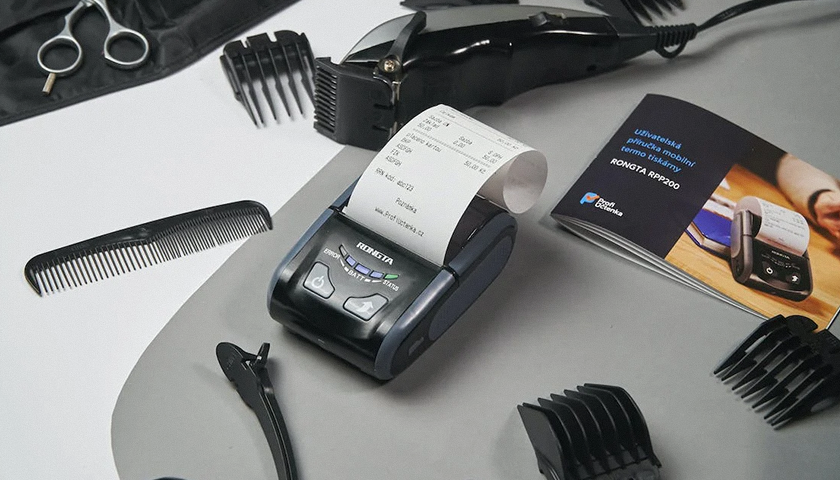
Summary
Modern cash registers, although they are advanced devices in themselves, can be additionally expanded and adapted to individual needs thanks to a variety of accessories. In the article, we discussed the most important of them, such as: thermal paper, necessary for printing receipts, barcode scanners that facilitate efficient product handling, and payment terminals that enable cashless transactions. These accessories not only increase the functionality of the cash register, but also influence the efficiency and professionalism of customer service. By investing in appropriate accessories, entrepreneurs can adapt the cash register to their needs, which translates into a better shopping experience for customers and improved sales processes.
![High-level security and control – Access Control Systems [2024]](https://hdwrglobal.b-cdn.net/wp-content/uploads/2024/04/transparent-thegem-product-justified-landscape-s.png)
